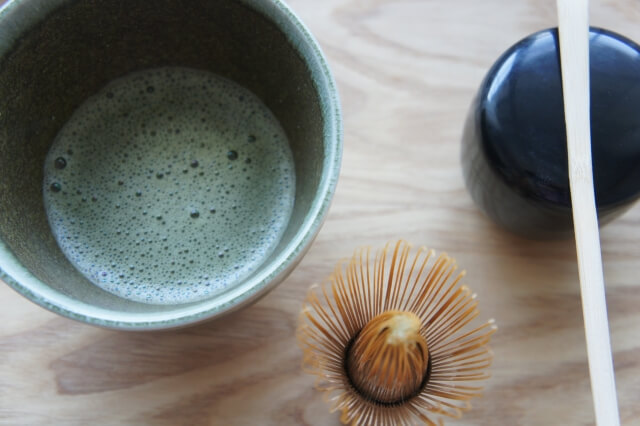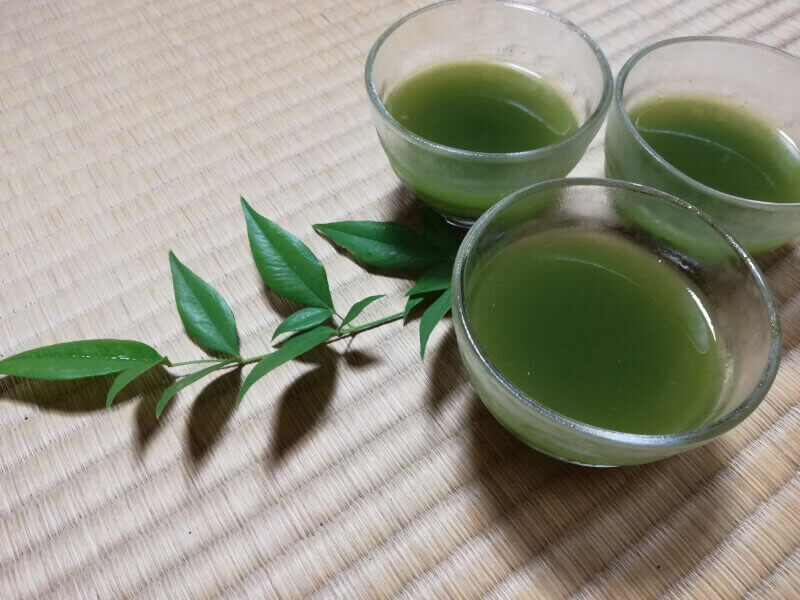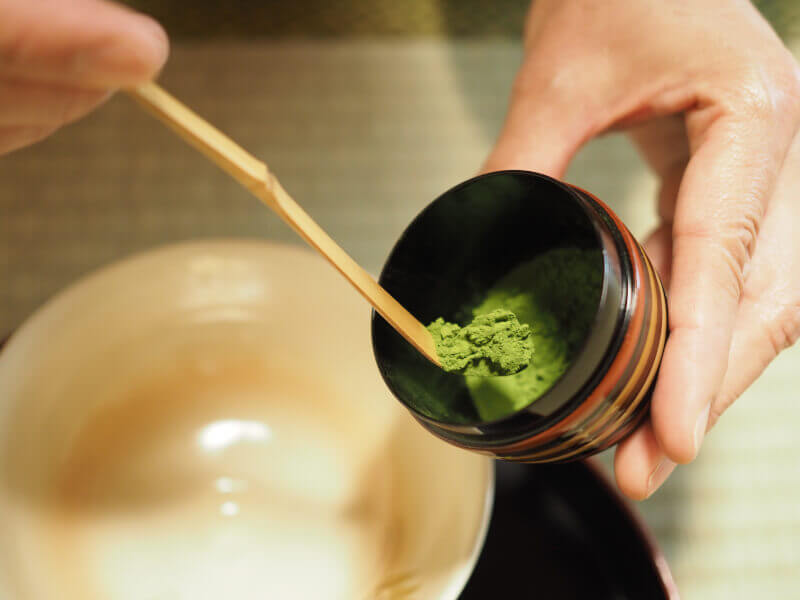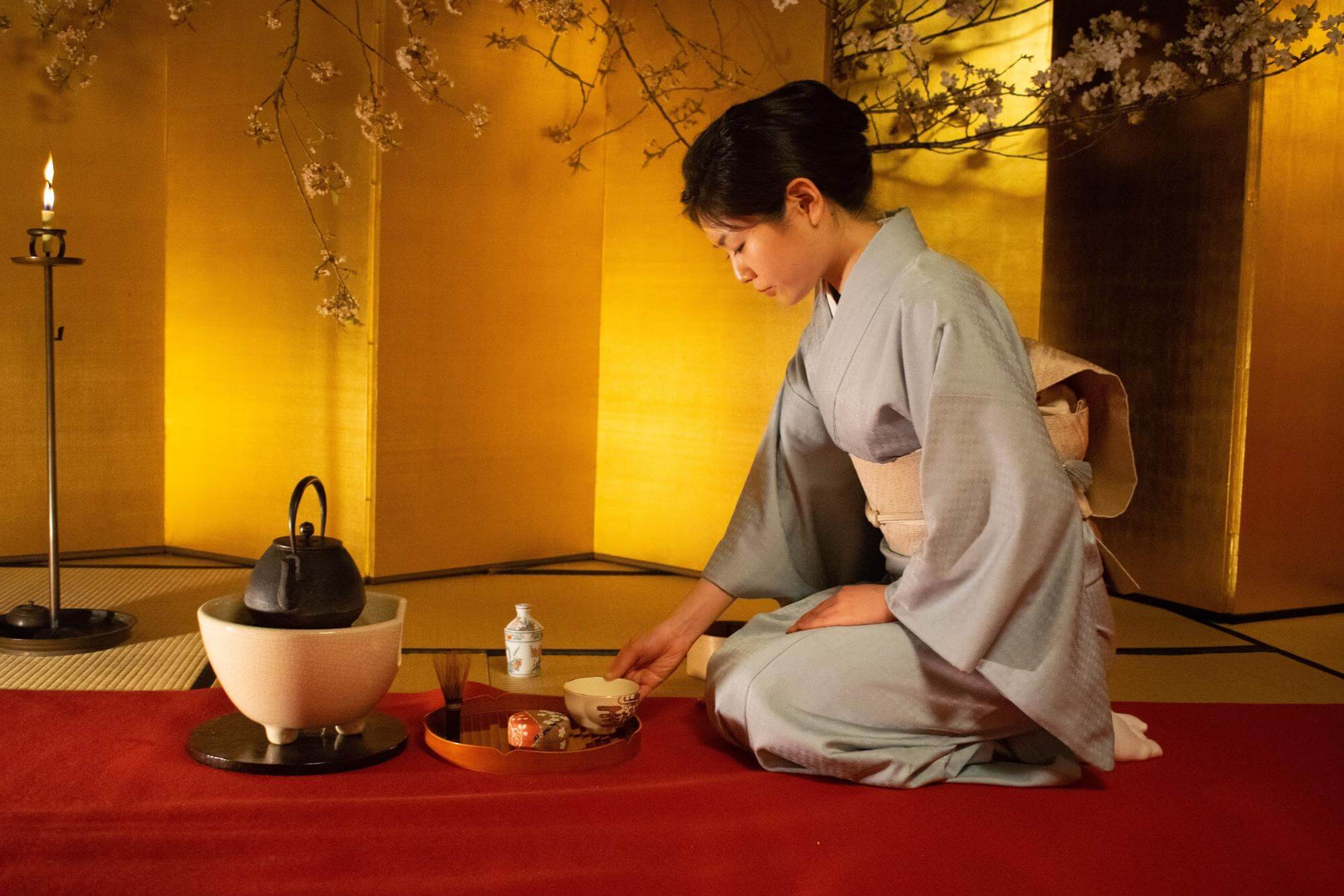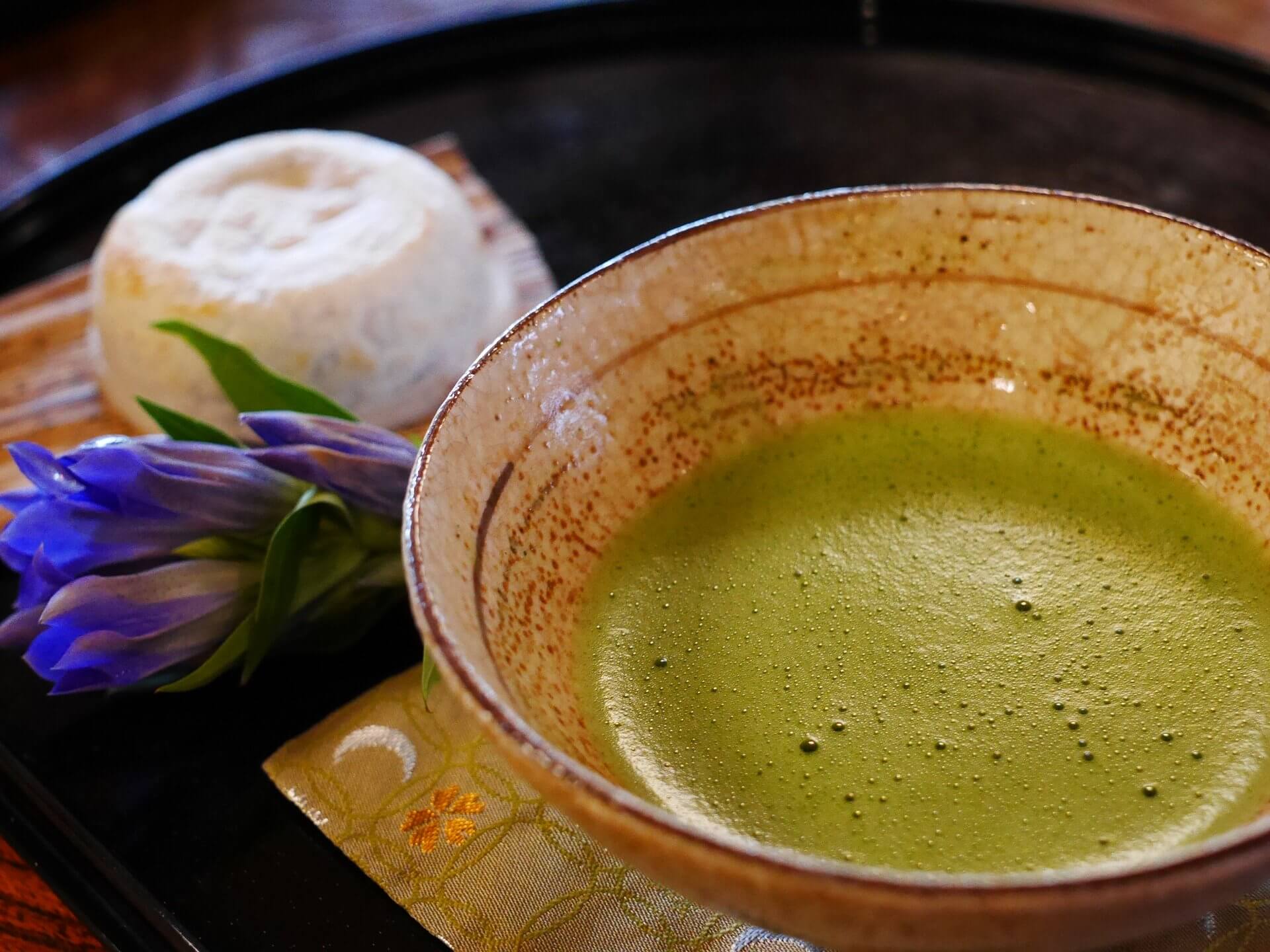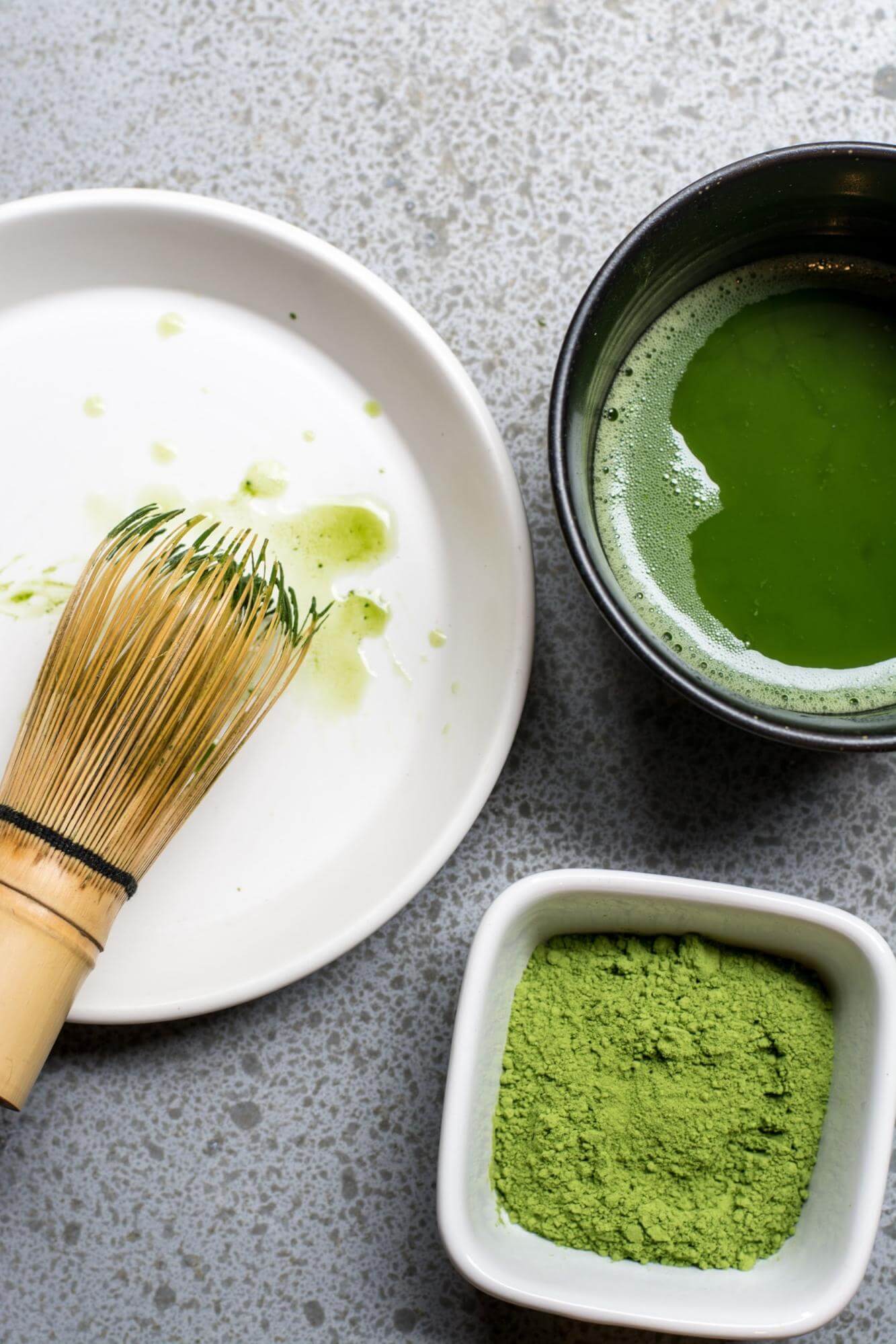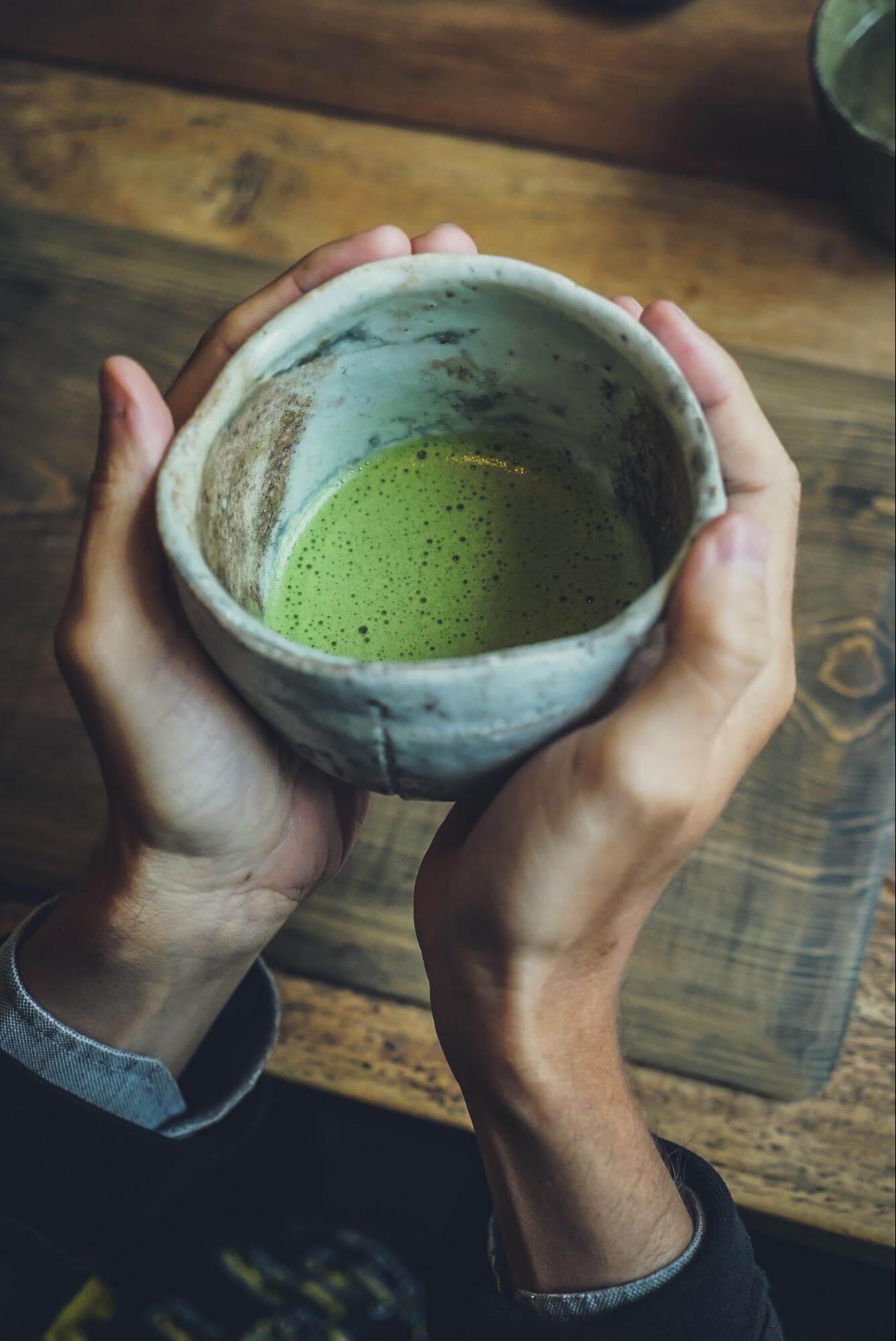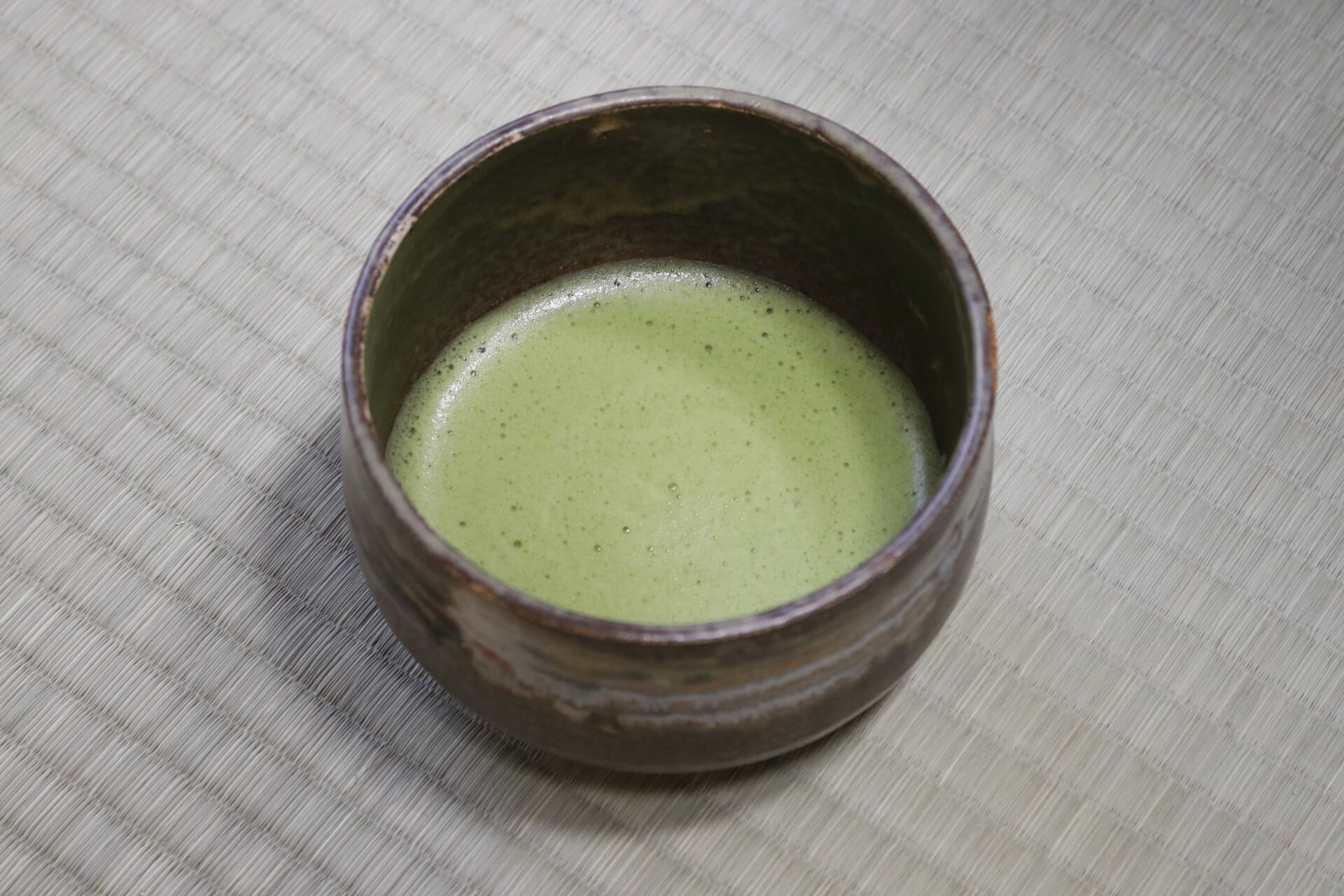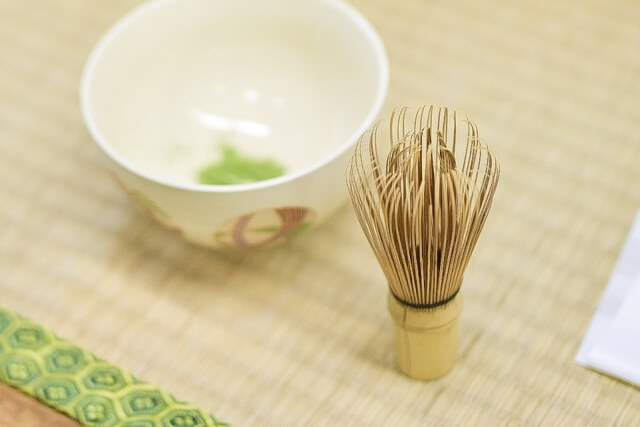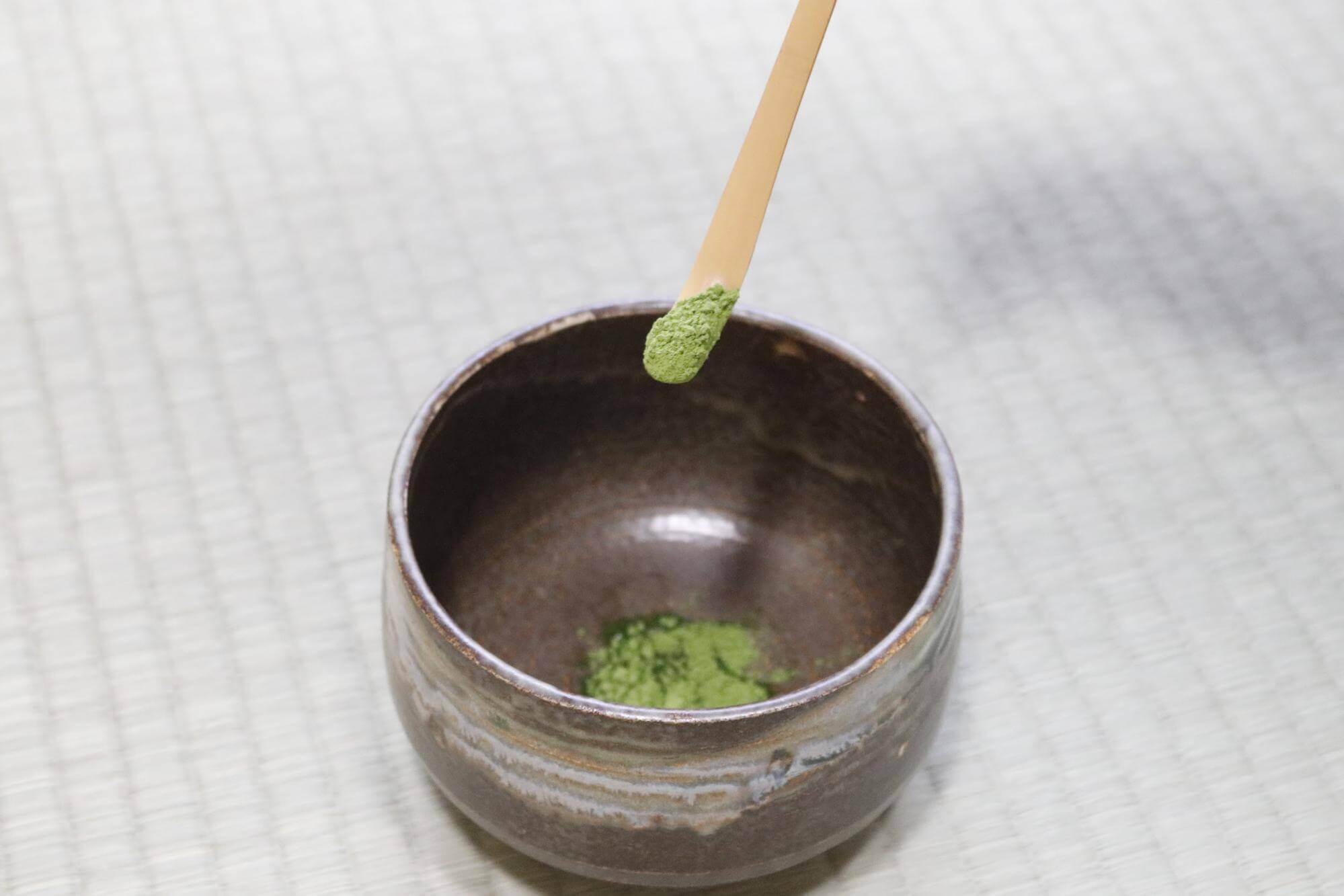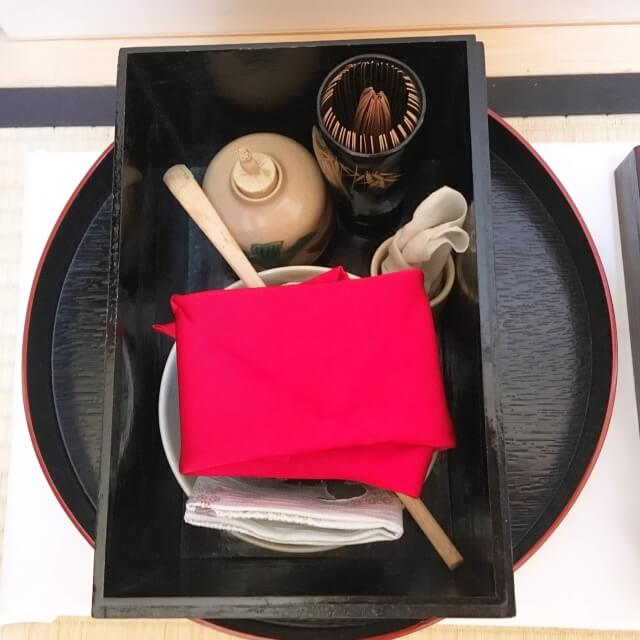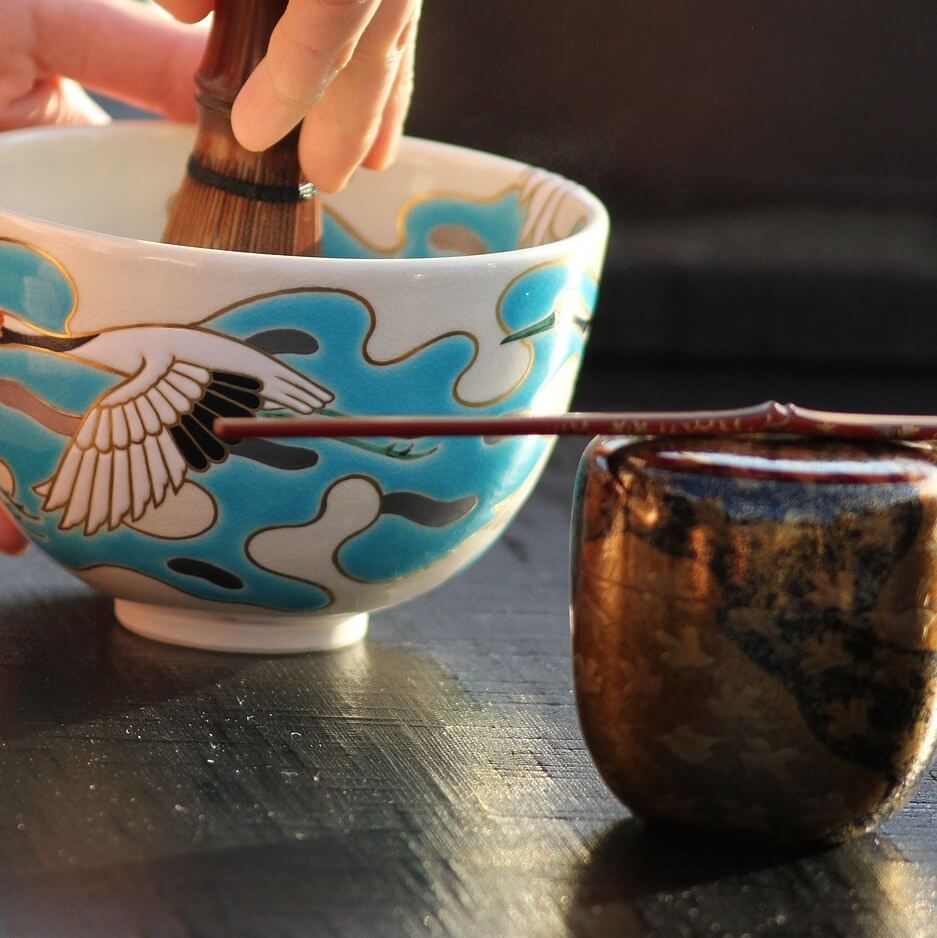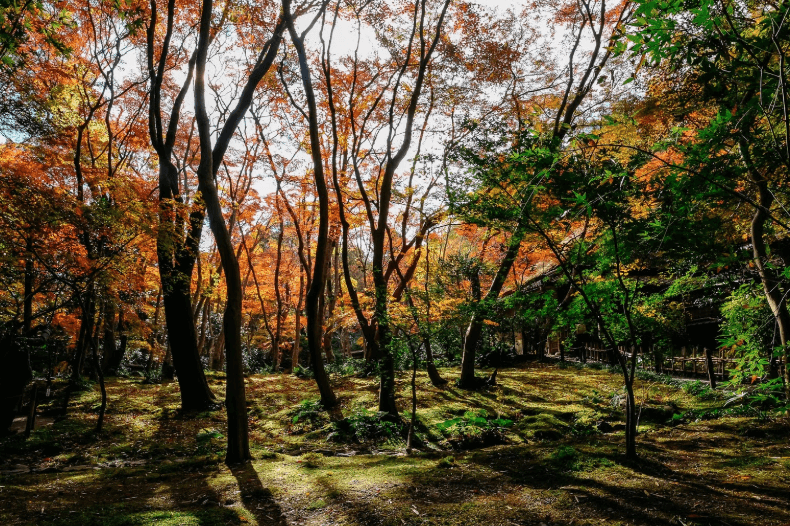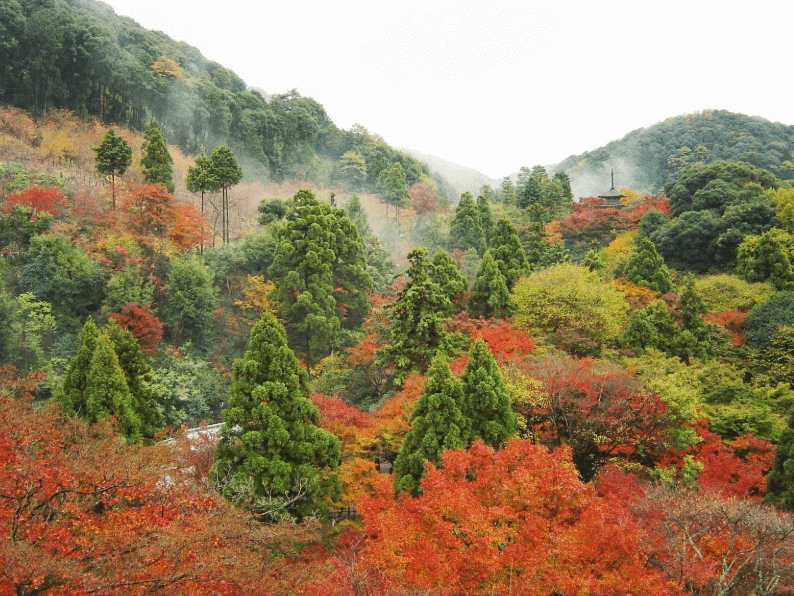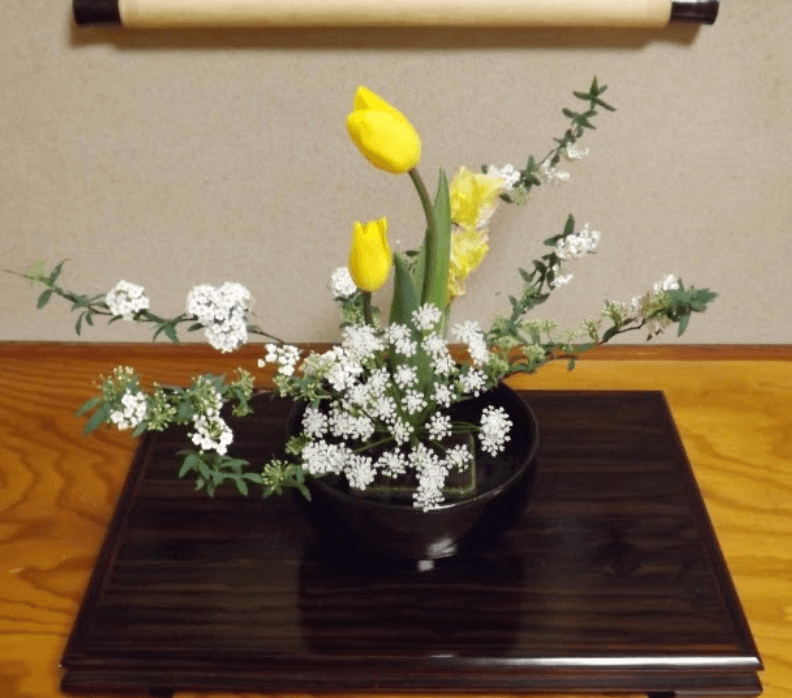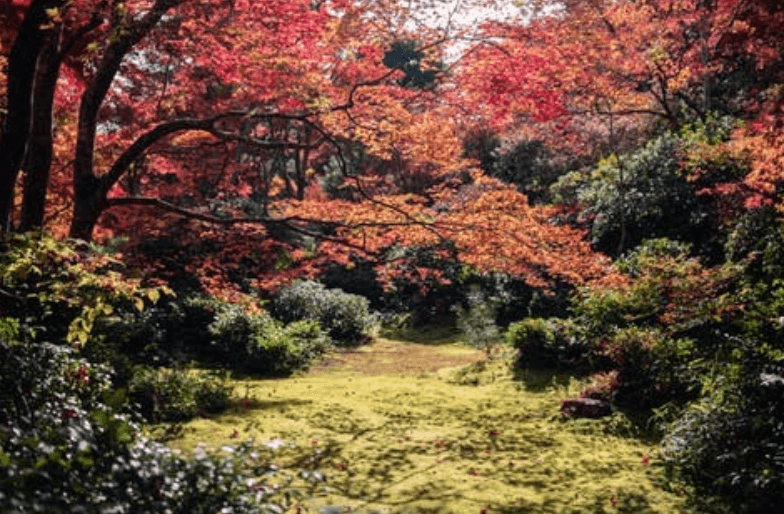All About Tea Ceremony Experiences in Kyoto
The Japanese tea ceremony is a very popular cultural experience for travelers visiting Japan. This tradition has its roots in Kyoto, making it the perfect city to experience the tea ceremony for yourself. Today, the three main schools of the Japanese tea ceremony carrying on the tradition are housed in the city. During your stay in Japan’s cultural capital, immerse yourself in Japanese culture through a tea ceremony experience.
How to Choose the Best Tea Ceremony Experience For You
There are many different types of tea ceremony experiences to choose from, so it can be difficult to decide which one is best for you. Here are some of the things to look out for when searching for your best fit.
Tea Ceremony School
There are three main schools of the Japanese tea ceremony: Urasenke, Omotosenke, and Mashanokojisenke. There are slight variances in methods, movements, and utensils used between these three schools. While researching tea ceremony experiences in Kyoto, you’re more likely to come across Urasenke and Omotesenke styles. One important difference between the two is the emphasis the Uranseke school has on guest enjoyment, meaning it is more open to allowing guests to sit on stools rather than the floor, as is traditional, if it is more comfortable. An Omotesenke tea ceremony emphasizes tradition and simplicity, embracing
Wabi-Sabi. (
Wabi-Sabi is the Japanese concept of the perfection of imperfection and acceptance of transience.) In addition, the Omotesenke school doesn’t whisk the matcha as frothily as the Urasenke school.
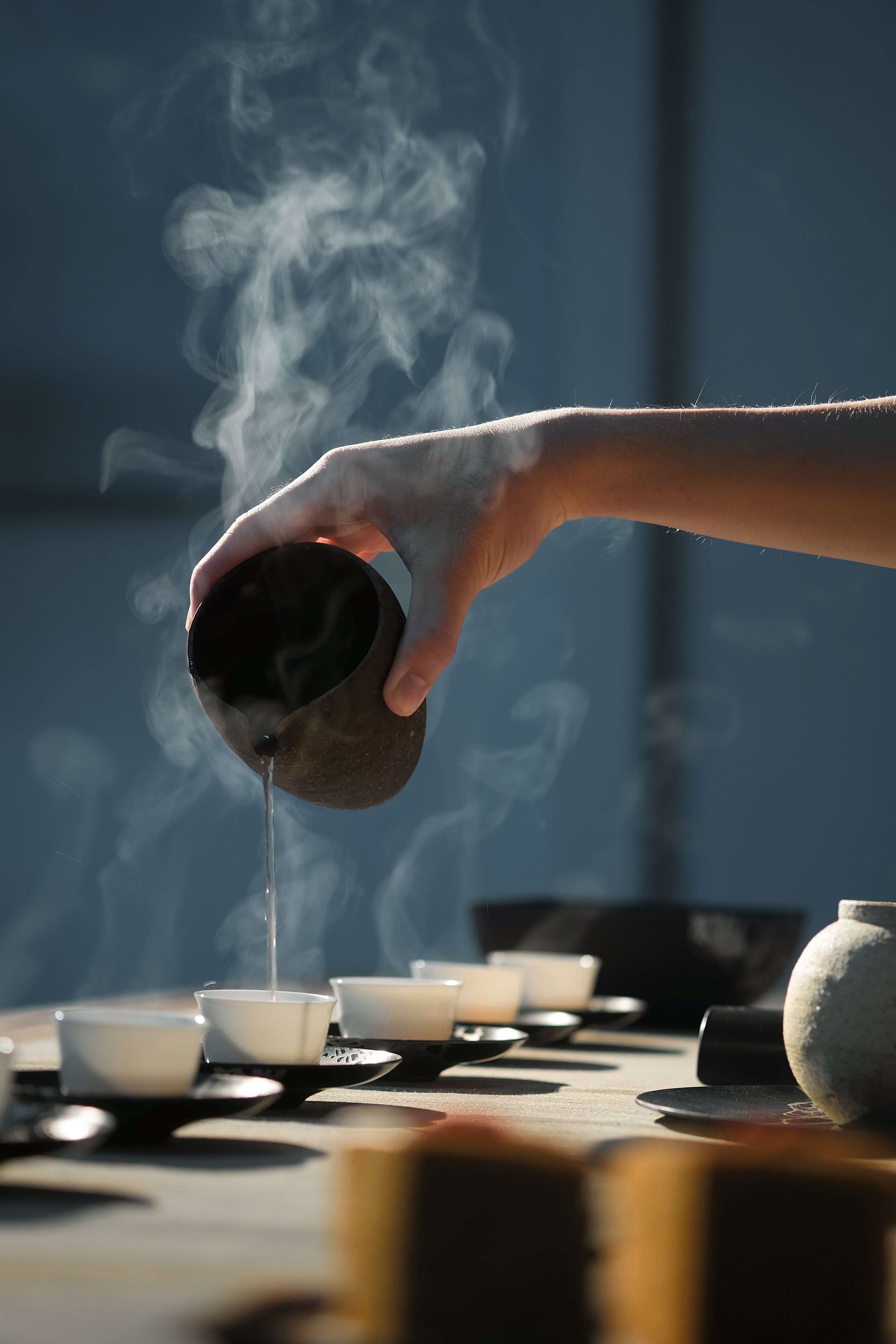
Lesson Style
Along with the different tea ceremony schools, tea ceremony experiences vary widely in their style and degree of formality. Read on to learn what to look out for.
Sitting vs. Standing Tea Ceremony
The most traditional tea ceremony will have guests sitting on tatami mats in a carefully set-up tea room. However, today, there are also tea ceremony experiences for those who have trouble sitting on floors, where chairs are available and/or the tea ceremony is performed on a table.
Private vs. Group Tea Ceremony
Most tea ceremony experience providers in Kyoto offer both private and group experiences. While a private tea ceremony is a much more intimate affair, and closer to tradition, it will usually be at a higher price. However, most
airKitchen tea ceremony experiences are private experiences.
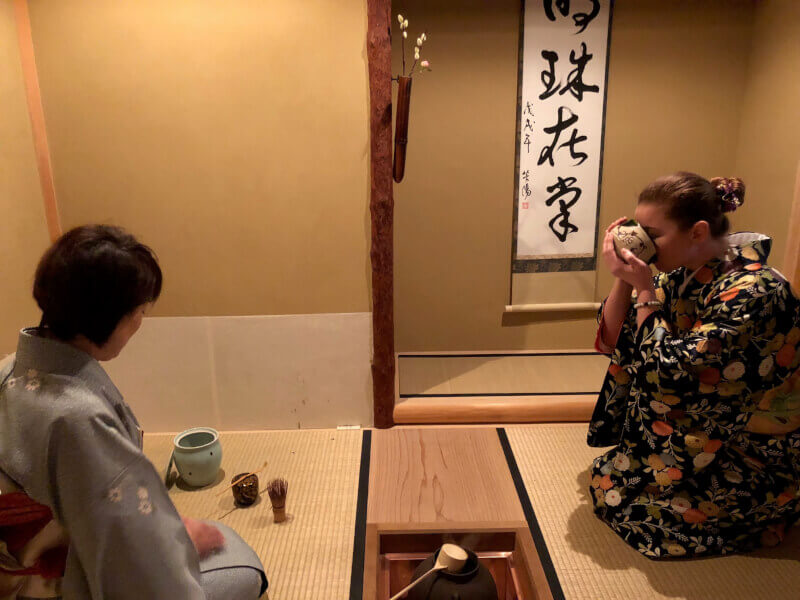
Observation vs. Participation in the Tea Ceremony
Do you want to simply observe the Japanese tea ceremony or learn how to prepare the matcha yourself? During the year throughout Japan, there are plenty of public tea ceremony viewings that correspond with seasonal events. However, a tea ceremony class will allow you to partake in the ritual yourself.
Kimono Rental
Renting and wearing a kimono as part of your tea ceremony experience is a popular choice. If this is something you’re interested in, make sure you book an experience where renting a kimono is part of the package! There are
airKitchen tea ceremony classes where kimonos are included.

Location
While convenience of location is always an important factor, bear in mind that at its most traditional, the tea ceremony incorporates peaceful natural elements surrounding the tea room. There are tea ceremonies for you no matter what your priority is. You’ll find many tea ceremony venues near train stations that are easily accessible. There are also tea ceremonies that might be a little farther from the station or in residential areas –
like airKitchen experiences – that instill a greater sense of peace true to the foundational principles of the Japanese tea ceremony. Some tea houses and other tea ceremony venues have a traditional Japanese garden on their premises that help guests more easily achieve a sense of serenity and harmony.
The Top Tea Ceremony Experiences in Kyoto
1. En Tea Ceremony Experience
In Kyoto, home to the tea ceremony, there are many places to choose from when it comes to experiencing this beautiful and uniquely Japanese ritual. En is a small teahouse conveniently located in the Gion district of Kyoto. You can participate in both private and group tea ceremonies here – just make sure to book in advance as they only accept reservations. The introductory tea ceremony classes are taught in English.
Map: https://goo.gl/maps/gomRsDsZUCZvFpDCA
Access: 5-minute walk from Yasaka Shrine
Hours: 10:00-19:00
Closed: New Year Holidays (Jan. 1-3)
Website: http://www.teaceremonyen.com/
Price:
- ¥2500/person (group)
- ¥4500/person (private)
If you’re seeking more than just a tea ceremony experience, consider this airKitchen class that takes place in a Kyoto local’s home. The host, Yumiko, is licensed in Japanese tea ceremony and Ikebana (Japanese flower arrangement). In this class, you’ll also learn how to make traditional Japanese dishes including sushi, miso soup, and tamagoyaki (Japanese omelet). After preparing and enjoying your meal together with your host, she will demonstrate the tea ceremony and serve Japanese confections and green tea. You can even prepare your own bowl of tea if you’d like under her guidance! Yumiko speaks English.
Access: the nearest station is Keage Station
Hours: flexible
Price: ¥8000/person
Learn more about this tea ceremony experience

3. Tea Ceremony Juan
Tea Ceremony Juan is located near Gojo Street in Kyoto. If you’re looking to learn about and participate in a very traditional tea ceremony, this is the experience for you. In English, hosts will teach you about the history of the tea ceremony and demonstrate the preparations before guiding you through the process. You can book in advance on their website or pay a slightly higher fee as a walk-in.
Map: https://goo.gl/maps/kdzfGvnyXsMMHntS6
Access: 6-minute walk from Gojo Station
Hours: 11:00-17:00 (some months they have extra sessions at 9:30)
Closed: Saturday and Sunday (some weekends open)
Website:https://teaceremonykyoto.com/
Price:
- ¥2950/person (Group booking)
- ¥9000/2person (Private booking)
- Free for children under 5
In this airKitchen tea ceremony experience, you can wear a kimono and experience a local Japanese home in Kyoto. The host is a licensed Japanese tea ceremony teacher who will guide you through the process, and you will enjoy wagashi (traditional Japanese sweets) along with green tea. We recommend this tea ceremony option for those seeking an intimate cultural exchange experience. All airKitchen hosts speak English.
Access: the nearest station is Kyoto Shiyakusho-mae Station
Hours: flexible
Price: ¥4400/person
Learn more about this tea ceremony experience

5. Tea Ceremony Koto
This teahouse is located just a one-minute walk from Kinkakuji Temple, making it the perfect place to stop to relax after visiting the famous gold-leafed Zen temple. There are several different tea ceremony plans to choose from depending on what kind of experience you’re seeking. There are both group and private classes, and ones where you can additionally enjoy other elements of traditional Japanese culture – like Ikebana (Japanese flower arrangement) and wagashi (Japanese sweets). You are also able to rent a kimono at this teahouse. Tea ceremonies change by seasons, and hosts speak English.
Map: https://goo.gl/maps/FLAZ9hjzhgB4GKtD9
Access: 1-minute walk from Kinkakuji Temple
Hours: 10:30-17:30
Closed: None
Website: http://teaceremony-kyoto.com/
Price:
- ¥3000/person for group ceremony
- ¥6600/person for private ceremony
- ¥12800/person for premium ceremony
- Discounts for children
Wagashi are traditional Japanese sweets that are often enjoyed during the Japanese tea ceremony. They are delicate and ornate, reflecting the Japanese eye for design. In this airKitchen tea ceremony experience, you’ll have the opportunity to learn how to make your own Wagashi at Wagashi Issho in Kyoto – a classroom specializing in Wagashi. You’ll also be able to experience the traditional Japanese tea ceremony and be given recipes in English to bring home with you.
Access: 1-minute walk from Shijo Station
Hours:
10:00-11:00
14:00-15:00
Price: ¥6300/person
Learn more about this tea ceremony experience
7. Kimono Tea Ceremony Maikoya Kyoto
Located in the heart of downtown Kyoto, Kimono Tea Ceremony Maikoya Kyoto offers group and private tea ceremonies in English that include kimono rental. What makes this teahouse stand out from the rest, however, is that it also offers a tea ceremony led by an apprentice geisha (Maiko). An interpreter will help you converse with the Maiko if you book this experience.
Map: https://goo.gl/maps/GyMGk618FPdVD1Ev6
Access: 2-minute walk from Kawaramachi Station
Hours: 9:30-19:00
Closed: None
Website: https://mai-ko.com/
Price:
- Depends on package, please check the website
8. Camellia Flower and Camellia Garden
Camellia Tea Ceremony has two teahouses located in Kyoto. Camellia Flower is in east Kyoto in Ninenzaka, while Camelia Garden lies to the west near Ryoanji Temple. Both are in historic neighborhoods, creating the perfect atmosphere to enjoy the traditional Japanese tea ceremony. Camellia Garden only offers private lessons in the 100-year-old traditional Japanese house it is located in. All hosts speak English.
Map:
Access:
- Camellia Flower: 12-minute walk from Yasaka Shrine
- Camellia Garden: 6-minute walk from Ryoanji Temple
Hours:
- Camellia Flower: 10:00-17:00
- Camellia Garden: 11:00-17:00
Closed:
- Camellia Flower: None
- Camellia Garden: Sunday
Website: https://www.tea-kyoto.com/
Price:
- ¥3300/person for group ceremony (Camellia Flower)
- ¥6600/person for private ceremony (Camellia Flower)
- ¥8800/person for private ceremony (Camellia Garden)
In airKitchen tea ceremony experience, 1.5-hour classes are offered once daily by reservation from 7:00-8:30. Kazuko Yokoyama runs this small, intimate tea ceremony out of her own home. She welcomes and invites all to join her for chakai (tea ceremony gathering) to enjoy a bowl of matcha and enjoy seasonal Japanese sweets and breakfast dishes. No Japanese language ability required, as her daughter assists in translation and preparation throughout the class.
Access: the nearest station is Ginkakuji Michi station or Kitashirakawa Bettocho bus stop
Hours: 7:00-8:30
Price: ¥7000/person
Learn more about this tea ceremony experience
 This is an airKitchen tea ceremony experience run by Yuko, a Kyoto native. She uses only local ingredients in all of her cooking classes, giving her guests a healthy and delicious experience of Japanese cuisine. In this class, participants will make and bake their own mitarashi dango, which actually originated in Kyoto. Guests will also smash their own mitarashi bean paste, before experiencing the Japanese tea ceremony. She reserves parties in two-hour time slots twice daily.
Access: the nearest station is Iwakura Station
Hours:
This is an airKitchen tea ceremony experience run by Yuko, a Kyoto native. She uses only local ingredients in all of her cooking classes, giving her guests a healthy and delicious experience of Japanese cuisine. In this class, participants will make and bake their own mitarashi dango, which actually originated in Kyoto. Guests will also smash their own mitarashi bean paste, before experiencing the Japanese tea ceremony. She reserves parties in two-hour time slots twice daily.
Access: the nearest station is Iwakura Station
Hours:
- 11:00-12:00
- 13:00-14:00
- 15:00-16:00
Price: ¥6000/person
Learn more about this tea ceremony experience

11. Japanese Culture Precious Wood
Japanese Culture Precious Wood offers an authentic Japanese culture experience for all visitors, foreign and domestic alike. In this beautiful ceremony thrown by a qualified tea master, participants will brew and drink their own green tea. There are also options for groups and single visitors to learn to properly dress in a kimono or yukata, which they will be able to take home with them.
Map: https://goo.gl/maps/Ztfzi2cBrxD2aJag9
Access: 8-minute walk from Yasaka Shrine
Hours: 9:00-20:00
Closed: None
Website: https://japaneseculture-preciouswood.jimdofree.com/
Price:
- ¥3900/person (without yukata or kimono)
- ¥11500/person (with yukata; no dressing)
- ¥11900/person (with yukata and dressing)
- ¥17500/person (with kimono; no dressing)
- ¥19500/person (with kimono and dressing)
12. Tea Ceremony Nagomi
This authentic Japanese tea ceremony with wagashi (Japanese sweets) takes place in Arashiyama, Kyoto. Seating accommodations are available upon request for guests who don’t want or are unable to sit on the floor. This intimate, group-oriented tea ceremony offers an authentic experience with a practiced tea master. Seven sessions are held per day at the top of the hour with max 15 students each. There can be some flexibility in the scheduling for those who call in advance.
Map: https://goo.gl/maps/QvcQ9JGQXdKwHR8q6
Access: 6-minute walk from Keifuku Arashiyama Station
Hours: 10:00-18:00
Closed: None
Website: https://kyoto-nagomi-maccha.com/en
Price:
- ¥2200/person 4+ students (high school excursion)
- ¥2700/person (private party)
- ¥1600/person (children under 12)
- ¥2500/person (2-10 people)
- ¥2300/person (11-15 people)
This authentic tea ceremony experience takes place in a historic 300-year-old samurai house. In this ceremony, guests will learn about the significance and history of the traditional Japanese tea ceremony, prepare their own organic matcha, and enjoy a homemade Japanese sweet called wagashi to balance the bitterness of the green tea. Guests may wear a kimono and/or participate in a sake tasting before their class as well. Classes run for 45 minutes with a maximum of six guests.
Access: the nearest station is Kyoto Station
Hours: 17:00-17:45 daily by reservation only
Price:
- ¥4000/person (group)
- +¥3000 for kimono rental
Learn more about this tea ceremony experience

14. Japan Kyosaraku Tea Ceremony
This small, intimate tea ceremony offers two options for guests: a 30-minute ceremony for guests to watch the tea master prepare their tea, or a 1-hour hands-on experience where guests learn to brew their own ceremonial matcha. Groups of five or less are able to reserve and participate in this experience. Four classes a day are offered, starting at 9:30, 12:00, 15:00, and 18:00.
Map: https://goo.gl/maps/Q7jfB5DA9RrwUqAn9
Access: 10-minute walk from Nijyo Castle
Hours: 9:00-20:00
Closed: Saturday and Sunday
Website: http://kyosaraku.com/english-page
Price: ¥4000/person
15. Wabichakai Tea Ceremony
This spiritual experience focuses on isolation and meditation: guests will immerse themselves in the authentic tea ceremony, seeing only the flickering lights, hearing only the water boiling in the kettle. This experience allows guests to enjoy the spirit of Kyoto through meditation over a simple meal and tea. There are no rules of etiquette required here; the point is to relax and immerse yourself in the experience. This tea ceremony is located in Nishijin, Kyoto’s famous textile district. The tea master and host, Michiyo Fujimura, was born and raised in Kyoto; she discovered the traditional Japanese tea ceremony in college and now works with medical institutions to work on Japanese culture-based methods to check and control stress.
Map: https://goo.gl/maps/Q6UepYU2eLbkBixB6
Access: 5-minute walk from Imadegawa Jofukuji bus stop
Hours: Tea ceremonies begin around sunset, varying with the seasons. All sessions are private. Reservations are required.
Closed: None
Website: http://www.kyoto-wabichakai.info/en/index.html
Price:
- ¥20000/person (meditation + tea ceremony; two hours)
- ¥30000/person (meditation + meal ceremony + tea ceremony; three hours)
16. Shin-Shin-An Tea Ceremony
This small, intimate teahouse offers a traditional Japanese tea ceremony experience, as well as other aspects of authentic Japanese art and culture. You are provided with everything needed to make your own tea and participate in the ceremony, guided through the process by an experienced tea master. Up to eight people can participate in each class.
Map: https://goo.gl/maps/vjUxHyHHZSVMW4wz9
Access: 10-minute walk from Kitaoji Station; 30-second walk from Kitaoji-Horikawa bus stop
Hours: Saturday and Sunday 13:00-16:00; bookings at top of every hour
Closed: Monday-Friday
Website: https://www.shin-shin-an.com/experience-english/
Price: ¥4000/person
17. Gen-an Tea Ceremony
Gen-an offers a casual, yet still traditional, Japanese tea ceremony. This experience begins with a demonstration to learn about the ceremony. Then, you are given a bamboo whisk and invited to try your hand at making your own matcha. This ceremony focuses on introducing beginners and newcomers to the tea ceremony and cultural principles behind it. It is offered in both Japanese and English. Reservations are required at least 24 hours in advance.
Map: https://goo.gl/maps/nFC9AAS61rg5qcgh6
Access: 12-minute walk from Ginkakuji-mae bus stop
Hours: 13:00-16:45
- 45-minute guided ceremonies on Saturday and Sunday
- 20-minute easy matcha whisking experience on weekdays
Closed: Irregular
Website: https://www.gen-an-kyoto.com/english/
Price:
- ¥5500/person (private ceremony, up to six people)
- ¥3500/person (weekday easy matcha whisking lessons)
18. Bikouen Samura Spirit Tea Ceremony
Bikouen offers their real-Kyoto experience in a 150-year-old historic tea room. They express omotenashi “hospitality” through their authentic tea ceremony. Guests can expect a warm welcome from an expert tea master and his wife, who speak Japanese, English, and Chinese, and thus can offer services to a wider variety of guests. In addition to the traditional tea ceremony, they also offer a gyokuro (high quality Japanese green tea) brewing lesson. Reservations are required at least three days in advance.
Map: https://goo.gl/maps/Vpv8LhJ6Jya8dd2R7
Access: 1-minute walk from Nishi Honganji-mae bus stop
Hours: 10:00-17:00
Closed: Sunday and public holidays
Website: https://bikouen.com/english/
Price:
- ¥3600+tax/person (50-minute Samurai spirit tea ceremony)
- ¥4000+tax/person (70-minute dark and light tea ceremony)
- ¥15000+tax/person (120-minute tea ceremony+meal)
- ¥1300+tax/person (25-minute make your own matcha tea ceremony)
- ¥1500+tax/person (30-minute gyokuro brewing lesson)
Learning About the Ancient Custom of the Japanese Tea Ceremony
What is the Japanese Tea Ceremony?
The Japanese tea ceremony is a traditional Japanese ritual where participants prepare, present, and consume matcha, or powdered green tea. In Japanese, the ceremony is called Chanoyu, or Sado/Chado. The manner in which the ceremony is performed is called Otemae. If leaf tea is used, the ceremony is known as Senchado. Chado of all forms is considered one of three Japanese arts of refinement. Often, this ceremony is performed by a geisha at the beginning of their apprenticeship – when they are called maiko.
 The Japanese tea ceremony is a 1,200-year-old ritual. In a specially prepared room, two or more individuals kneel on the floor and share a carefully prepared cup of matcha. After each person sips from the single tea bowl, the bowl is slowly turned toward the next person to sip. The cup is then delicately passed to that person. Every movement within the Japanese tea ceremony is done with deliberate slowness. The modern-day purpose for the event is to promote the balance of spirit, peace of mind, and a calming of the nerves. It is, at its heart, a relaxation technique and way to celebrate the hospitality a host shows their guests.
The Japanese tea ceremony is a 1,200-year-old ritual. In a specially prepared room, two or more individuals kneel on the floor and share a carefully prepared cup of matcha. After each person sips from the single tea bowl, the bowl is slowly turned toward the next person to sip. The cup is then delicately passed to that person. Every movement within the Japanese tea ceremony is done with deliberate slowness. The modern-day purpose for the event is to promote the balance of spirit, peace of mind, and a calming of the nerves. It is, at its heart, a relaxation technique and way to celebrate the hospitality a host shows their guests.
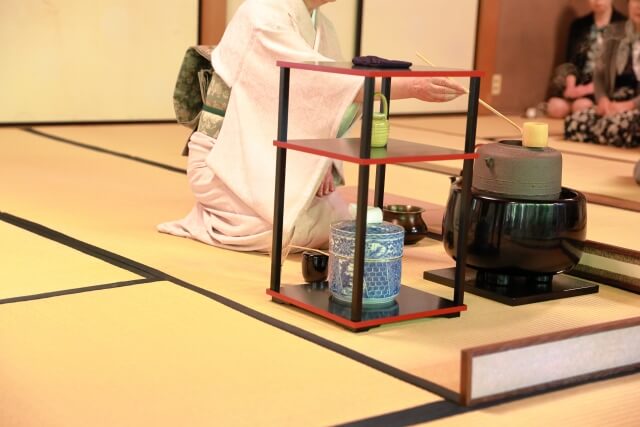 A Japanese tea ceremony may help with the unraveling of a difficult problem. As the mind is delivered to a state of clearness and peace, solutions never before considered by the participant often rise to the surface of thought. This method of bringing the high waves of a stormy sea to rest, be it of the mind or spirit, may also reveal beacons that guide one to safe harbors.
Traditionally, Japanese tea ceremonies are often performed at the end of a trying day. They help to relieve stress. And as for the health benefits of drinking green tea... Well, there are a great number to consider. Green tea contains the amino acid L-theanine, which has been proven to reduce anxiety. Green tea also contains polyphenols, which help reduce inflammation. It increases the body’s ability to burn fat and perform physical tasks.
We could go on. But suffice to say the Japanese tea ceremony has the capacity to be healing for both the mind and body, a healthy tradition whose age proves its worth. Should you ever get a chance to experience one please do so, as it’s a relaxing way to experience and learn about an important part of Japan’s cultural history.
A Japanese tea ceremony may help with the unraveling of a difficult problem. As the mind is delivered to a state of clearness and peace, solutions never before considered by the participant often rise to the surface of thought. This method of bringing the high waves of a stormy sea to rest, be it of the mind or spirit, may also reveal beacons that guide one to safe harbors.
Traditionally, Japanese tea ceremonies are often performed at the end of a trying day. They help to relieve stress. And as for the health benefits of drinking green tea... Well, there are a great number to consider. Green tea contains the amino acid L-theanine, which has been proven to reduce anxiety. Green tea also contains polyphenols, which help reduce inflammation. It increases the body’s ability to burn fat and perform physical tasks.
We could go on. But suffice to say the Japanese tea ceremony has the capacity to be healing for both the mind and body, a healthy tradition whose age proves its worth. Should you ever get a chance to experience one please do so, as it’s a relaxing way to experience and learn about an important part of Japan’s cultural history.
A Closer Look at the Purpose of a Japanese Tea Ceremony
We touched on this above. Yes, a Japanese tea ceremony promotes balance and clearness. It can help to reveal a pathway through difficult times. But let’s move deeper. As the tradition dates all the way back to 800 A.D., there is much we can explore about the ritual’s underpinnings.
In Japan, the word Wabi refers to the spiritual ups and downs of the human condition. Sabi is used to describe a weathered or worn down condition caused by the pursuit of material joy. At a Japanese tea ceremony, Wabi and Sabi – combined to be Wabi-Sabi – are considered as in need of rest, or relaxation. The perfection in imperfection and acknowledgement of life’s transience are celebrated through the tea ceremony.
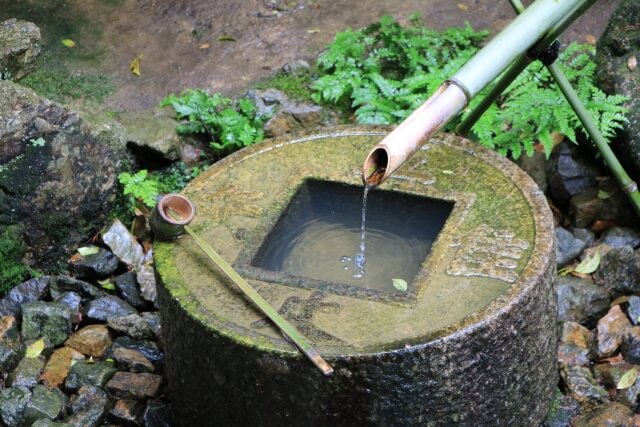 Another purpose of the tea ceremony—one that dates back to the origins of the ritual—is for a host to show hospitality to his or her guests in an atmosphere that provides escape from the stress and chaos of daily life. At its most traditional, the tea ceremony setting is typically in a dimly lit tea room with a tatami mat floor. Outside the room there is often a flower garden that guests are encouraged to visit as a further reminder that not everything about life is a rush, rush, rush. It’s important to slow down sometimes. Today many of Japan’s most lovely gardens feature tea rooms with incredible views.
Another purpose of the tea ceremony—one that dates back to the origins of the ritual—is for a host to show hospitality to his or her guests in an atmosphere that provides escape from the stress and chaos of daily life. At its most traditional, the tea ceremony setting is typically in a dimly lit tea room with a tatami mat floor. Outside the room there is often a flower garden that guests are encouraged to visit as a further reminder that not everything about life is a rush, rush, rush. It’s important to slow down sometimes. Today many of Japan’s most lovely gardens feature tea rooms with incredible views.
When Is the Best Time to Have a Japanese Tea Ceremony?
Now this may seem like an odd question at first. The best time for a tea ceremony? To read from the above you might respond: Well, any time you want to entertain guests, or just relax and unwind.
But let’s move away from those considerations for now and talk literally about time. Or more to the point, the time of year. Tea practitioners in Japan like to divide the year into two seasons. First, we have the “sunken hearth” season. This covers the cold months, which for the Japanese run from November to April. Next comes the “brazier” season—the warmer time between May to October. With each season come little changes in the Temae, or the procedure for making the tea. The configuration of the tea room’s tatami mats will usually be shifted as well.
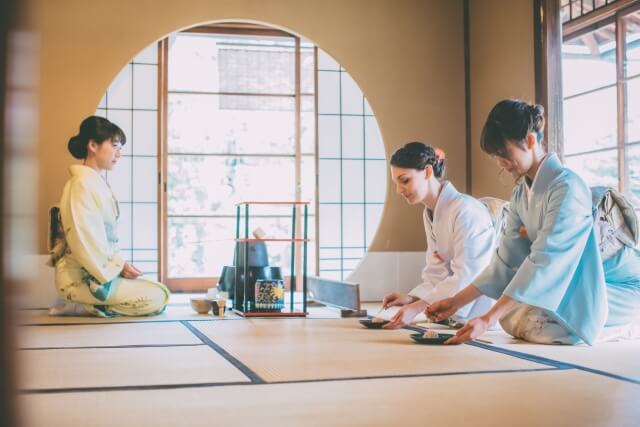 The host will take great care in getting the tea room ready for their guests. They may decorate it with seasonal flowers and prepare seasonal food. For instance, at the beginning of the brazier season, the tea room is set up to give guests a feeling of a new birth, or blossoming to life. The Japanese sometimes refer to summer tea ceremonies as Furo, or summer-style.
A winter style tea session is sometimes referred to as “Ro”. Ro is a square hole, or sunken hearth, in the tatami mat where an iron kettle is heated to make the room feel warmer during the winter. At this time of year, the room may also be decorated with red maple leaves or gingkoes, along with a reminder that “Time and tide wait for no man” in the form of wall calligraphy by a Zen Buddhist priest of old.
The host will take great care in getting the tea room ready for their guests. They may decorate it with seasonal flowers and prepare seasonal food. For instance, at the beginning of the brazier season, the tea room is set up to give guests a feeling of a new birth, or blossoming to life. The Japanese sometimes refer to summer tea ceremonies as Furo, or summer-style.
A winter style tea session is sometimes referred to as “Ro”. Ro is a square hole, or sunken hearth, in the tatami mat where an iron kettle is heated to make the room feel warmer during the winter. At this time of year, the room may also be decorated with red maple leaves or gingkoes, along with a reminder that “Time and tide wait for no man” in the form of wall calligraphy by a Zen Buddhist priest of old.
 So then, when is the best time for a Japanese tea ceremony? That question doesn’t seem to be an issue, so long as the ritual is made to harmonize with the time of year it takes place. The best time is any time one feels the need to slow down and pay homage to the melting of the snow, the blooming of spring flowers, the heat of a summer sun, or the turning of an autumn leaf.
So then, when is the best time for a Japanese tea ceremony? That question doesn’t seem to be an issue, so long as the ritual is made to harmonize with the time of year it takes place. The best time is any time one feels the need to slow down and pay homage to the melting of the snow, the blooming of spring flowers, the heat of a summer sun, or the turning of an autumn leaf.
The History of the Japanese Tea Ceremony
The first known ceremony dates back to the 9th century when Eichu, the Buddhist monk, prepared and served Sencha (leaf tea) to Emperor Saga in 815. By imperial order in 816, the Japanese began to cultivate its own tea plantations. The prominence and popularity of tea in Japan faded for a time after this, but by 1330, when what we have come to consider traditional Japanese culture began to evolve, it began proliferating again as a “transformative practice”. For the time between the 14th and 17th centuries, the tea even became politicized, and long was a symbol of the elite and samurai classes. By the 16th century, tea drinking was practiced in all levels of Japanese society. Sen no Rikyu, one of the most revered figures in the Japanese tea ceremony, was influenced by the teachings of his master: that each meeting is sacred and should be treasured, as the time and ceremony can’t be reproduced. The ceremony itself represents important aspects of Japanese thought and culture: respect, purity, harmony, and tranquility being among these. Influenced by Buddhist principles, experiencing this ceremony is used to promote spiritual awakening.
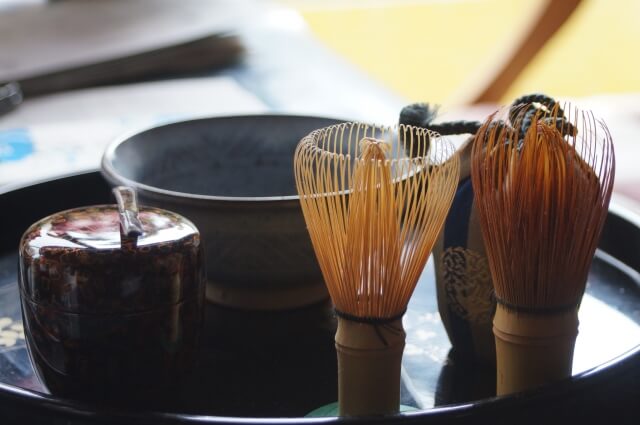 At the end of the 12th century, a style of tea preparation called Tencha was introduced to Japan by another Buddhist monk, Eisai, upon a return trip from China. Tencha is essentially powdered green tea placed into a bowl of hot water and mixed. This powdered green tea became a part of religious rituals in Buddhist monasteries in Japan.
Over the next two hundred years, Japanese tea came to be viewed as an almost meditative practice. More and more people came to love the tea not only for its taste but for its reputation as a mental and spiritual relaxant. By the end of the 16th century, tea drinking had taken hold the entirety of Japanese society. The concept of ichi-go-ichi-e, an idiom expressing the importance of each moment in time as being irretrievable and thus irreplaceable, was and still is a popular way of thought, and easily adopted into the tea ceremony or the way of tea.
At the end of the 12th century, a style of tea preparation called Tencha was introduced to Japan by another Buddhist monk, Eisai, upon a return trip from China. Tencha is essentially powdered green tea placed into a bowl of hot water and mixed. This powdered green tea became a part of religious rituals in Buddhist monasteries in Japan.
Over the next two hundred years, Japanese tea came to be viewed as an almost meditative practice. More and more people came to love the tea not only for its taste but for its reputation as a mental and spiritual relaxant. By the end of the 16th century, tea drinking had taken hold the entirety of Japanese society. The concept of ichi-go-ichi-e, an idiom expressing the importance of each moment in time as being irretrievable and thus irreplaceable, was and still is a popular way of thought, and easily adopted into the tea ceremony or the way of tea.
 Today the Japanese tea ceremony continues to be a popular ritual among Japanese people. There are schools that teach the right ways to prepare and serve matcha, with the three main ones (Urasenke, Omotosenke, and Mashanokojisenke) finding their homes in Kyoto. For tourists to Kyoto, attending a tea ceremony is an absolute must for getting a full-on unique experience of Japanese culture.
Today the Japanese tea ceremony continues to be a popular ritual among Japanese people. There are schools that teach the right ways to prepare and serve matcha, with the three main ones (Urasenke, Omotosenke, and Mashanokojisenke) finding their homes in Kyoto. For tourists to Kyoto, attending a tea ceremony is an absolute must for getting a full-on unique experience of Japanese culture.
How Does the Geisha, or Geisha Girl, Fit Into a Japanese Tea Ceremony?
In Japan’s past, Japanese tea ceremonies were often conducted by geishas and geishas-in-training (maiko). This is because geisha are trained from a young age to entertain by performing traditional Japanese arts such as dancing, singing… and yes, serving tea.
The Japanese tea ceremony is, in fact, a requirement for study when one wishes to become a geisha. She will dress in kimono, which is a form of traditional Japanese clothing, and don the white oshiro makeup emblematic of geisha. The geisha will then prepare the tea and serve it to their guests in the ancient ways of this centuries-old ceremony.
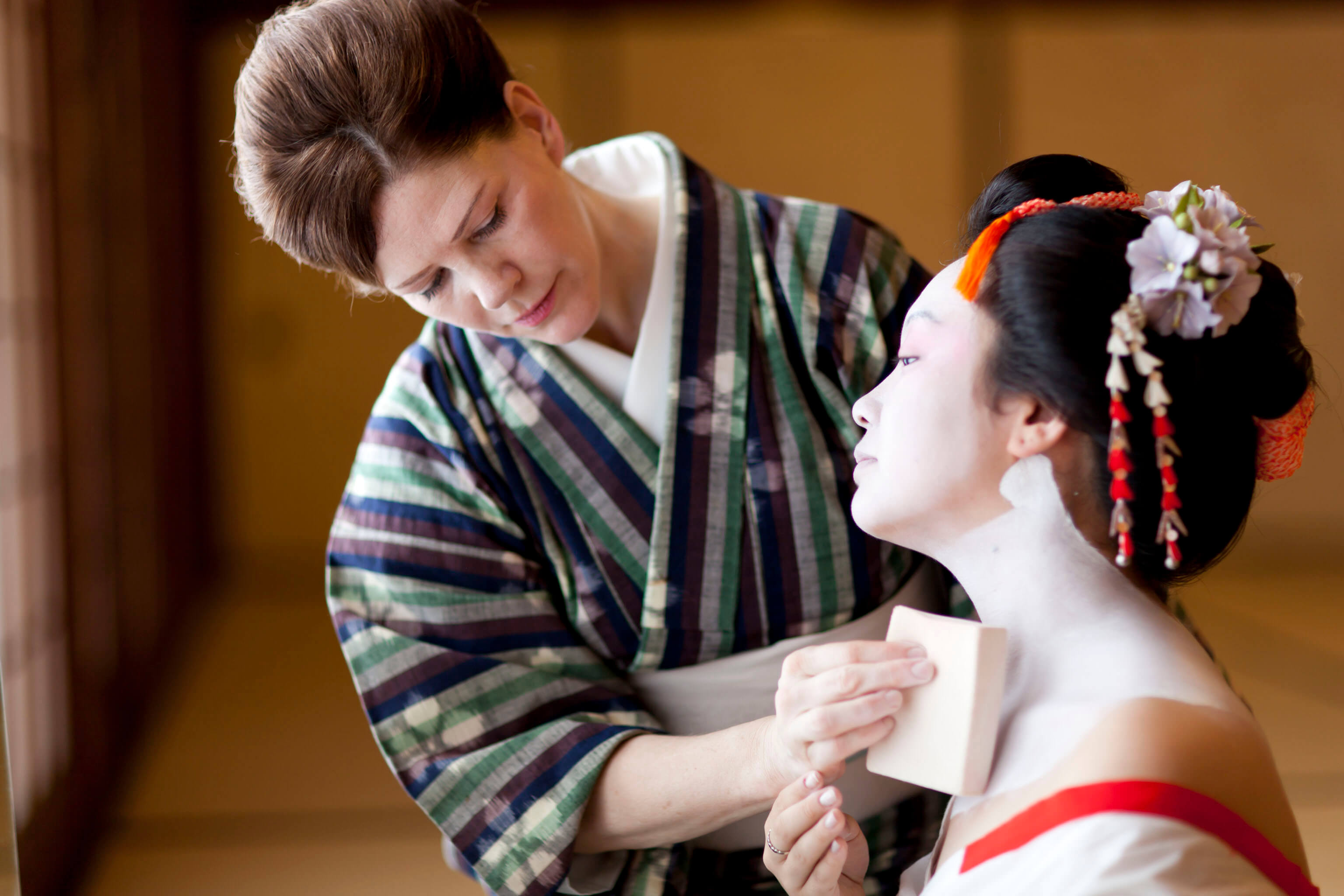 Today’s geisha girls are also often skilled with the English language — an ability unheard of until modern times, when tourists from the west became a common sight in cities like Tokyo and Kyoto. In Kyoto, there are opportunities to attend a tea ceremony performed by a young geisha in training to practice her craft.
Today’s geisha girls are also often skilled with the English language — an ability unheard of until modern times, when tourists from the west became a common sight in cities like Tokyo and Kyoto. In Kyoto, there are opportunities to attend a tea ceremony performed by a young geisha in training to practice her craft.
The Samurai and the Tea Ceremony
Quite possibly one of the more extravagant and noble Japanese traditions, the wealthy Samurai families have devoted their time to preserving the ritual of the tea ceremony all over the country. They made sure that, apart from martial arts, the Japanese way of life was kept alive through Kodo which means incense, Kado which means flowers, Shado which means traditional calligraphy, and Chado which means tea. These are fine arts that have transferred from generation to generation.
Being at the top of the social hierarchy, samurai families introduced the health benefits of tea all over the country. Tea ceremonies were offered to everyone — Japanese and foreign tourists alike. Historically, the tea ceremony taking place in a traditional tea room starts with the participants entering the Nijiruguchi entrance with their samurai swords left outside. This symbolizes equality and tranquility in the tea room. Two different kinds of teas are served to enjoy: Koicha and Usucha. Koicha, which is thicker and more bitter in taste, is served in a single shared bowl. Usucha, which is thinner green tea, is served in seasonal individual bowls.
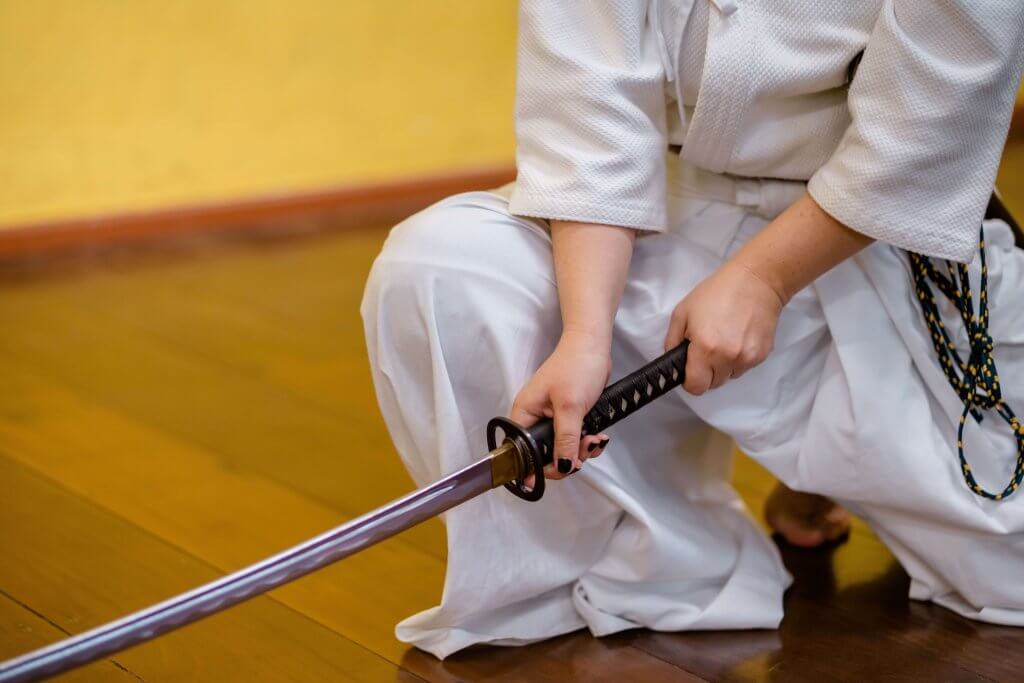
How Long Does a Japanese Tea Ceremony Last?
A question that has had many different answers, especially over the past twenty years. For tourists, a Japanese tea ceremony is often sculpted to fit the needs of a person or persons with loaded itineraries. A tourist tea ceremony could range from a quick, one-hour in and out, to a full-blown four-hour experience. The idea behind the fast ceremonies is to give travelers a brief taste of this old, old Japanese ritual without using up too much of their busy day. Longer ceremonies often include a full-course kaiseki meal, along with the preparation of the two types of matcha and serving of wagashi (traditional Japanese sweets). Shorter tea ceremonies often skip the meal, instead focusing on the serving and preparation of the green tea.

If you're lucky enough to participate in a longer (3-hour or more) tea ceremony, here's what you can expect:
- Guests approach the tea room through a garden, stepping on stones
- They wash their hands in a stone basin located in the garden
- The tea room is entered and a kaiseki course meal is eaten (rice, soup, sake, snack cakes, Japanese pickles can be included)
- Japanese main sweets are served to prepare guests' palate for the bitter tea
- Intermission
- The way of thick tea
- Now for some dried wagashi sweets
- The way of thin tea
What Kind of Tea Is Used in a Japanese Tea Ceremony?
Matcha is the Japanese word for green tea. This is what you will typically see prepared, in very deliberate, delicate fashion, at a Japanese tea ceremony. It normally comes with a helping of Japanese sweets to counteract the bitterness of the tea.
Matcha tea powder is not like regular loose-leaf green tea. It is a far better grade of tea with more vitamins and nutrients. Ceremonial grade matcha powder feels rather silky and smooth, has a distinct green color, and has a light scent of something like grass.
You can prepare it in two ways: thick and thin. Thin tea, or Usucha, is made from the leaves of tea bushes that are under 30 years old. Koicha, or thick green tea, comes from tea bushes over 30 years old. At a tea ceremony you will typically be served the thick tea first, then some sweets, followed by the thin tea.
Tea Ceremony Etiquette
We need to be careful here. Japanese tea ceremony etiquette is, in fact, very delicate, precise, and important to respect as a participant. If you intend to take part in one of the longer, more ritualistic ceremonies, it’s a good idea to be prepared. Here is a crash course on Japan tea ceremony etiquette.
Outside the tea room:
- Be on time
- Take off your shoes; your host or hostess will provide slippers
- Kimono, or Japanese traditional clothing, is always appreciated, but Western wear that is business-casual is also fine
Inside the tea room:
- Wait for the host or hostess to seat you; never just plop yourself down
- Lower yourself to your knees; this style of sitting is called Seiza – if sitting on the floor is uncomfortable for you, seek out tea ceremony experiences that can accommodate you and provide chair seating
- When the teacup is passed to you, turn it slightly to avoid drinking where the last guest’s lips touched
- Eat everything the host/hostess gives you
All right, so now you have the gist. Smile. Remember the basics. It isn’t very hard, and your host will be there to guide you along the way! In fact, it’s rather relaxing. You’ll impress your family and friends, and also pay respect to the time-honored ritual of the Japanese tea ceremony.

What to Expect From Your Kyoto Tea Ceremony Experience
Procedures vary from school to school, and differ on time of day, month/season of the year, and venue. Guests to the ceremony arrive before the start and enter a waiting room, where they remove coats and purses and put on fresh Tabi. Guests are served a hot drink while they wait. When all preparations have finished, guests take a seat on a waiting bench until summoned. Guests and hosts bow to each other, then guests follow the host to a stone basin where they ritually wash their hands and mouths. Footwear is removed outside the tea room. Upon entering, guests may examine the tea equipment in the room before taking a seat Seiza-style on the tatami (traditional tea mat) in order of prestige. Guests are then served a meal, followed by sake and a small sweet. Guests may then leave so the host may prepare the room; they wash again and re-enter when requested. The host enters the room again, cleans each utensil, and places all equipment in a prescribed fashion. When all preparation is complete, the host prepares the tea, and bows to each guest upon handing over their tea. After each guest has taken a drink and complimented the host, the bowl is passed to the next guest. After all guests have partaken, the host signals that the more informal ceremony is going to begin. Guests may now relax, and seating cushions may be brought out. The host will clean all utensils in front of the guests, and hand them to the guest to examine before putting them away. The gathering is over when the guest bows upon leaving the facility. This ceremony may take anywhere from 30 to 90 minutes.
Where to Enjoy Matcha in Kyoto
Interested in enjoying a cup of green tea or matcha-flavored dessert in Kyoto, but don’t have the time or resources for a tea ceremony experience? Here are our recommended spots to treat yourself to matcha in this historic city.
In the historic neighborhood of Gion, you can indulge in yummy matcha desserts like ice cream, sponge cake, and jelly drinks. One of its most famous offerings is the matcha parfait.
In Nakamura Tokichi’s main store in Kyoto Station, you can indulge in matcha desserts or a cup of classic green tea. Nakamura Tea is very famous, so you can snag a bag of matcha to brew at home on your way out!
Enjoy a frothy cup of matcha with a cute bear design atop, matcha jelly, or a beautiful matcha parfait here. They have plenty of green tea desserts to choose from.
For a more classic teahouse experience, visit Ippodo. You can enjoy a cup of green tea with traditional and beautiful Japanese desserts (wagashi) here.
About the Contributor
Mei Brunson co-authored this piece. Raised in Seattle, Mei moved to Tokyo in October 2019 and shortly after joined the airKitchen team. She is vegan and passionate about making Japan’s famous and tasty food culture more accessible to vegans and others with dietary preferences like herself.
















 The Japanese tea ceremony is a 1,200-year-old ritual. In a specially prepared room, two or more individuals kneel on the floor and share a carefully prepared cup of matcha. After each person sips from the single tea bowl, the bowl is slowly turned toward the next person to sip. The cup is then delicately passed to that person. Every movement within the Japanese tea ceremony is done with deliberate slowness. The modern-day purpose for the event is to promote the balance of spirit, peace of mind, and a calming of the nerves. It is, at its heart, a relaxation technique and way to celebrate the hospitality a host shows their guests.
The Japanese tea ceremony is a 1,200-year-old ritual. In a specially prepared room, two or more individuals kneel on the floor and share a carefully prepared cup of matcha. After each person sips from the single tea bowl, the bowl is slowly turned toward the next person to sip. The cup is then delicately passed to that person. Every movement within the Japanese tea ceremony is done with deliberate slowness. The modern-day purpose for the event is to promote the balance of spirit, peace of mind, and a calming of the nerves. It is, at its heart, a relaxation technique and way to celebrate the hospitality a host shows their guests.
 A Japanese tea ceremony may help with the unraveling of a difficult problem. As the mind is delivered to a state of clearness and peace, solutions never before considered by the participant often rise to the surface of thought. This method of bringing the high waves of a stormy sea to rest, be it of the mind or spirit, may also reveal beacons that guide one to safe harbors.
Traditionally, Japanese tea ceremonies are often performed at the end of a trying day. They help to relieve stress. And as for the health benefits of drinking green tea... Well, there are a great number to consider. Green tea contains the amino acid L-theanine, which has been proven to reduce anxiety. Green tea also contains polyphenols, which help reduce inflammation. It increases the body’s ability to burn fat and perform physical tasks.
We could go on. But suffice to say the Japanese tea ceremony has the capacity to be healing for both the mind and body, a healthy tradition whose age proves its worth. Should you ever get a chance to experience one please do so, as it’s a relaxing way to experience and learn about an important part of Japan’s cultural history.
A Japanese tea ceremony may help with the unraveling of a difficult problem. As the mind is delivered to a state of clearness and peace, solutions never before considered by the participant often rise to the surface of thought. This method of bringing the high waves of a stormy sea to rest, be it of the mind or spirit, may also reveal beacons that guide one to safe harbors.
Traditionally, Japanese tea ceremonies are often performed at the end of a trying day. They help to relieve stress. And as for the health benefits of drinking green tea... Well, there are a great number to consider. Green tea contains the amino acid L-theanine, which has been proven to reduce anxiety. Green tea also contains polyphenols, which help reduce inflammation. It increases the body’s ability to burn fat and perform physical tasks.
We could go on. But suffice to say the Japanese tea ceremony has the capacity to be healing for both the mind and body, a healthy tradition whose age proves its worth. Should you ever get a chance to experience one please do so, as it’s a relaxing way to experience and learn about an important part of Japan’s cultural history.
 Another purpose of the tea ceremony—one that dates back to the origins of the ritual—is for a host to show hospitality to his or her guests in an atmosphere that provides escape from the stress and chaos of daily life. At its most traditional, the tea ceremony setting is typically in a dimly lit tea room with a tatami mat floor. Outside the room there is often a flower garden that guests are encouraged to visit as a further reminder that not everything about life is a rush, rush, rush. It’s important to slow down sometimes. Today many of Japan’s most lovely gardens feature tea rooms with incredible views.
Another purpose of the tea ceremony—one that dates back to the origins of the ritual—is for a host to show hospitality to his or her guests in an atmosphere that provides escape from the stress and chaos of daily life. At its most traditional, the tea ceremony setting is typically in a dimly lit tea room with a tatami mat floor. Outside the room there is often a flower garden that guests are encouraged to visit as a further reminder that not everything about life is a rush, rush, rush. It’s important to slow down sometimes. Today many of Japan’s most lovely gardens feature tea rooms with incredible views.
 The host will take great care in getting the tea room ready for their guests. They may decorate it with seasonal flowers and prepare seasonal food. For instance, at the beginning of the brazier season, the tea room is set up to give guests a feeling of a new birth, or blossoming to life. The Japanese sometimes refer to summer tea ceremonies as Furo, or summer-style.
A winter style tea session is sometimes referred to as “Ro”. Ro is a square hole, or sunken hearth, in the tatami mat where an iron kettle is heated to make the room feel warmer during the winter. At this time of year, the room may also be decorated with red maple leaves or gingkoes, along with a reminder that “Time and tide wait for no man” in the form of wall calligraphy by a Zen Buddhist priest of old.
The host will take great care in getting the tea room ready for their guests. They may decorate it with seasonal flowers and prepare seasonal food. For instance, at the beginning of the brazier season, the tea room is set up to give guests a feeling of a new birth, or blossoming to life. The Japanese sometimes refer to summer tea ceremonies as Furo, or summer-style.
A winter style tea session is sometimes referred to as “Ro”. Ro is a square hole, or sunken hearth, in the tatami mat where an iron kettle is heated to make the room feel warmer during the winter. At this time of year, the room may also be decorated with red maple leaves or gingkoes, along with a reminder that “Time and tide wait for no man” in the form of wall calligraphy by a Zen Buddhist priest of old.
 So then, when is the best time for a Japanese tea ceremony? That question doesn’t seem to be an issue, so long as the ritual is made to harmonize with the time of year it takes place. The best time is any time one feels the need to slow down and pay homage to the melting of the snow, the blooming of spring flowers, the heat of a summer sun, or the turning of an autumn leaf.
So then, when is the best time for a Japanese tea ceremony? That question doesn’t seem to be an issue, so long as the ritual is made to harmonize with the time of year it takes place. The best time is any time one feels the need to slow down and pay homage to the melting of the snow, the blooming of spring flowers, the heat of a summer sun, or the turning of an autumn leaf.
 At the end of the 12th century, a style of tea preparation called Tencha was introduced to Japan by another Buddhist monk, Eisai, upon a return trip from China. Tencha is essentially powdered green tea placed into a bowl of hot water and mixed. This powdered green tea became a part of religious rituals in Buddhist monasteries in Japan.
Over the next two hundred years, Japanese tea came to be viewed as an almost meditative practice. More and more people came to love the tea not only for its taste but for its reputation as a mental and spiritual relaxant. By the end of the 16th century, tea drinking had taken hold the entirety of Japanese society. The concept of ichi-go-ichi-e, an idiom expressing the importance of each moment in time as being irretrievable and thus irreplaceable, was and still is a popular way of thought, and easily adopted into the tea ceremony or the way of tea.
At the end of the 12th century, a style of tea preparation called Tencha was introduced to Japan by another Buddhist monk, Eisai, upon a return trip from China. Tencha is essentially powdered green tea placed into a bowl of hot water and mixed. This powdered green tea became a part of religious rituals in Buddhist monasteries in Japan.
Over the next two hundred years, Japanese tea came to be viewed as an almost meditative practice. More and more people came to love the tea not only for its taste but for its reputation as a mental and spiritual relaxant. By the end of the 16th century, tea drinking had taken hold the entirety of Japanese society. The concept of ichi-go-ichi-e, an idiom expressing the importance of each moment in time as being irretrievable and thus irreplaceable, was and still is a popular way of thought, and easily adopted into the tea ceremony or the way of tea.
 Today the Japanese tea ceremony continues to be a popular ritual among Japanese people. There are schools that teach the right ways to prepare and serve matcha, with the three main ones (Urasenke, Omotosenke, and Mashanokojisenke) finding their homes in Kyoto. For tourists to Kyoto, attending a tea ceremony is an absolute must for getting a full-on unique experience of Japanese culture.
Today the Japanese tea ceremony continues to be a popular ritual among Japanese people. There are schools that teach the right ways to prepare and serve matcha, with the three main ones (Urasenke, Omotosenke, and Mashanokojisenke) finding their homes in Kyoto. For tourists to Kyoto, attending a tea ceremony is an absolute must for getting a full-on unique experience of Japanese culture.
 Today’s geisha girls are also often skilled with the English language — an ability unheard of until modern times, when tourists from the west became a common sight in cities like Tokyo and Kyoto. In Kyoto, there are opportunities to attend a tea ceremony performed by a young geisha in training to practice her craft.
Today’s geisha girls are also often skilled with the English language — an ability unheard of until modern times, when tourists from the west became a common sight in cities like Tokyo and Kyoto. In Kyoto, there are opportunities to attend a tea ceremony performed by a young geisha in training to practice her craft.

 If you're lucky enough to participate in a longer (3-hour or more) tea ceremony, here's what you can expect:
If you're lucky enough to participate in a longer (3-hour or more) tea ceremony, here's what you can expect:































